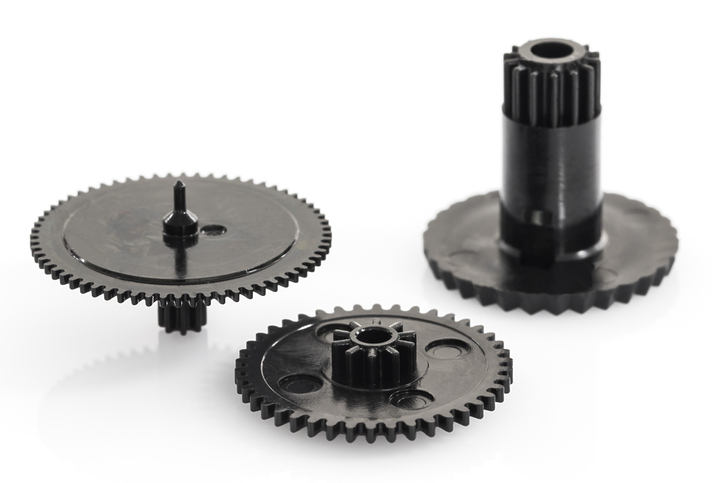Accounting for injection molding tolerances, and what affects them, is vitally important when it comes to accuracy and performance in parts design and manufacturing.
The process of injection molding is a versatile manufacturing method that caters to an array of industries, allowing manufacturers to quickly and economically produce large volumes of identical components. Such components must consistently meet strict requirements without compromising quality and safety standards.
A key aspect of injection molding is tolerances, or the range in variability allowed between the finished part and the technical specifications for the part design. If parts are manufactured that fall outside the acceptable tolerance, performance will suffer. They may not fill their role in the application correctly, experience failure more often, and not fit properly or correctly as part of a multiple-component assembly. Failure to reach proper injection molding tolerances for one part could then render other dependent manufactured parts non-functional.
There are different levels of tolerance as well. For instance, typical injection molds are CNC-machined to tolerances of +/- 0.005 inches unless more restrictive tolerances are required. In general, “tight tolerance” injection molding refers to +/-.002 inches in variation and “very tight” to +/- .001 inches.
Now let’s get into some key considerations that will help ensure tight tolerances are met and allow your molded parts to serve the purpose they were created for.
Experience Excellence With Ensinger: Contact our team today to learn more about working with injection molding experts.
4 Key Factors in Achieving the Proper Injection Molding Tolerances
Many different elements can affect tolerances and determine whether going after tight or very tight tolerance levels is appropriate. Here are the four biggest factors that play a part in impacting the ability of a manufacturer to reach designated specs.
Design for Manufacturability
As the moniker suggests, Design for Manufacturing (DFM) principles detail designing parts with a specific manufacturing method in mind. The manufacturing method — and its unique restrictions — are considered and discovering ways to optimize the process can lead to more precise end products. Key elements addressed by DFM for injection molding include:
- Wall thickness — The thickness of the mold walls needs to be substantial enough to ensure high product quality and avoid defects such as warping, cracking, and twisting, while also being thin enough to improve production time and use of raw materials. The type of polymer used and the functional performance of the part are also key.
- Draft angle — Proper draft angles make it easier to remove the part from the mold. Without them, the friction created can damage the sides of the part, or you may require ejector pins for removal, which may leave marks.
- Design features — DFM ensures features such as bosses, gussets, and ribs are designed correctly. This includes the proper placement, how to strengthen them, and how to integrate them to prevent part warpage.
Select the Right Material
The options are nearly limitless when it comes to injection molding plastic materials. Choosing the right one for your needs depends on accounting for individual characteristics in the material choice — such as strength and hardness, flexibility, cost, temperature endurance, and more. Different polymers also have varying shrink rates and may need the use of additives or fillers, which all impact the ability to meet injection molding tolerances.
Consider Tooling Impact
The tooling and how the mold performs also impact part quality and the ability to meet tolerance levels. Factors like accurate and consistent heating and cooling are also critical as mold characteristics such as the injection pressure, the viscosity of the resin (affects the resin flow) and the mold fill time.
The location of gates and ejector pins on the mold also needs to be considered. Incorrect placement can lead to defects and marring.
Repeatable Process Controls
Consistency is essential to quality part production and always meeting tolerance allowances. Leveraging tools like embedded temperature and pressure sensors in the mold provides real-time feedback to give insight into monitoring and calibrating variables — like temperature, holding time, and pressure — that affect part deviation.
A Tool for Every Task: It’s essential to examine the range of plastic manufacturing solutions a partner can provide.
Ensinger Precision Components Is Equipped for Tight Injection Molding Tolerances
For over 80 years, Ensinger Precision Components has offered injection molding and plastic part manufacturing using a wide range of high-performance plastics to provide customers with optimal solutions to their design and manufacturing challenges.
Given our range of advanced equipment and the ability to match the right machinery to your part requirements, we’re able to execute precision, or tight tolerance, molding. Some of our other injection molding services include:
- Insert Molding — This process features the molding or forming of plastic parts around other non-plastic parts or inserts.
- Over-Molding — Similar to insert molding, over-molding has the plastic material molded over another molded part.
- Automation — Automation systems are now seen as essential in injection molding manufacturing as they help improve part quality with consistency, lead to less wasted material, reduce labor costs, and operate on consistent cycle times, reducing lead times.
From an individual molded component to an elaborate multi-component assembly with various value-added operations, Ensinger Precision Components has the knowledge, experience, and capabilities to successfully carry out critical plastic engineering support for your business. We have in-depth specialist knowledge of the DFM processes and materials required to solve your toughest challenges.
